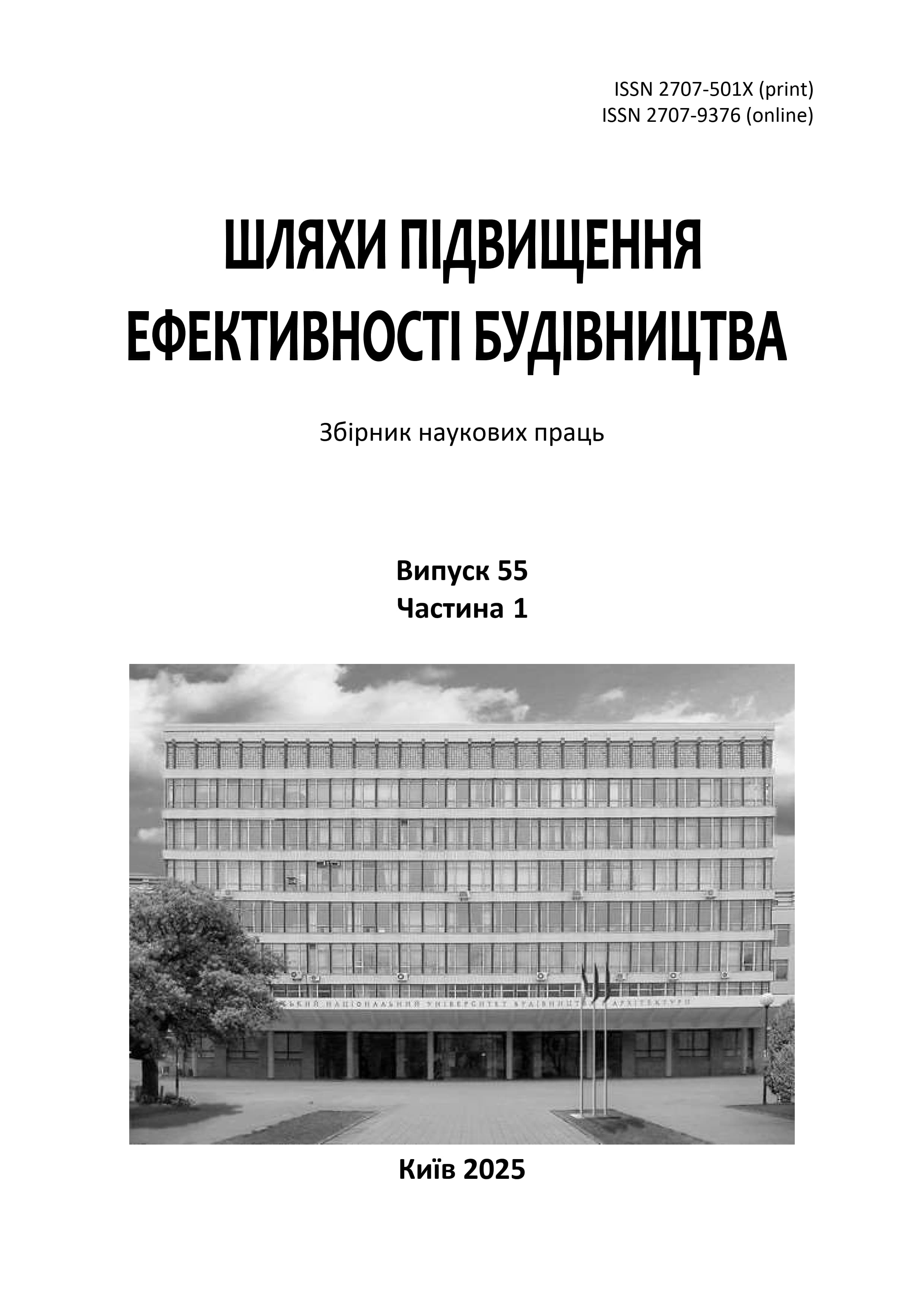Life-Cycle Cost Assessment of Real Estate Assets: Ukrainian Realities and International Experience, Challenges and Prospects
DOI:
https://doi.org/10.32347/2707-501x.2025.55(1).296-303Keywords:
real estate, life-cycle cost (LCC), whole-life cost (WLC), life-cycle assessment (LCA), economic and energy efficiency of buildings, building life-cycle management, sustainable constructionAbstract
This article explores the theoretical foundations and practical aspects of applying the concepts of Life-Cycle Costing (LCC) and Whole-Life Costing (WLC) to assess the economic efficiency of investments in the construction and operation of real estate assets. In the context of economic instability, inflationary pressures, energy crises, and the growing need for resource efficiency, the relevance of approaches that account not only for construction phase expenditures but also for costs incurred throughout the entire life cycle of an asset is significantly increasing.
The study examines the features of the national regulatory approach, with a focus on the provisions of the Ukrainian standard DSTU ISO 15686-5:2020, which establishes methodological foundations for LCC assessment. The key barriers to the implementation of LCC and WLC methods in Ukraine are identified as insufficient regulatory support, low awareness among market participants, a lack of standardized tools for economic calculations, and an underdeveloped culture of long-term financial planning in the construction sector.
A comparative analysis of the LCC and WLC concepts is presented. LCC is primarily focused on expenditures associated with design, construction, operation, maintenance, and disposal, while WLC also accounts for externalities, social and environmental factors, including asset residual value and environmental impact costs. This distinction is particularly relevant in the context of the EU’s sustainable construction priorities and Ukraine’s post-war reconstruction.
The article discusses international experience in integrating LCC/WLC approaches into project management practices as a positive reference point for the Ukrainian construction industry. The feasibility of implementing life-cycle assessment mechanisms in the planning of public and private construction projects is substantiated, with the aim of improving investment efficiency, reducing energy consumption, increasing procurement transparency, and establishing an effective value management system throughout an asset's service life.
The paper also outlines future research directions, including the digitalization of LCC/WLC calculations (particularly integration with BIM technologies), the development of national industry-specific databases on maintenance and repair costs, and the advancement of tools for comparative analysis of project alternatives based on life-cycle principles. It is emphasized that the implementation of LCC and WLC concepts has the potential not only to reduce costs but also to achieve broader socio-economic and environmental goals in real estate management. The need to integrate social and behavioral dimensions into life-cycle assessment (LCA) methodologies for construction assets is also underlined.
References
Човнюк Ю.В., Приймаченко О.В., Чередніченко П.П., Чередніченко О.П. Концептуальні основи аналізу витрат життєвого циклу нерухомості, інвестицій у об’єкти міського будівництва і господарства при врахуванні впливу інфляційних процесів. Міжнародний науковий журнал "Інтернаука". Серія: "Економічні науки". 2023. №6. https://doi.org/10.25313/2520-2294-2023-6-8894
Гетун Г., Лесько І. Врахування вартості життєвого циклу при проектуванні суміщених покриттів будівель. Енергоефективність в будівництві та архітектурі. 2018. Вип. 11. С. 95–102. DOI: https://doi.org/10.32347/2310-0516.2018.11.95-102
Суходольська Н.А. Вартість життєвого циклу товару як критерій оцінки тендерних пропозицій. Економіка, менеджмент та адміністрування. 2022. №2(100). C. 49-53. DOI: https://doi.org/10.26642/ema-2022-2(100)-49-53
Heralová R.S. Life Cycle Costing as an Important Contribution to Feasibility Study in Construction Projects. Procedia Engineering. 2017. Vol. 196, P. 565-570.
URL: https://www.sciencedirect.com/science/article/pii/S1877705817331521
Heralová R.S. Life Cycle Costing of Public Construction Projects. IOP Conference Series: Earth and Environmental Science. 2019. URL: https://iopscience.iop.org/article/10.1088/1755-1315/290/1/012060
Zhang, H. Life cycle costing analysis of deep energy retrofits of a mid-rise building to understand the impact of energy conservation measures. arXiv. 2023. https://doi.org/10.48550/arXiv.2304.00456
Asdrubali F., Fronzetti Colladon A., Segneri L., Gandola D.M. LCA and energy efficiency in buildings: Mapping more than twenty years of research, Energy and Buildings, 2024, Vol. 321. https://doi.org/10.1016/j.enbuild.2024.114684.
Sharma R., et al. Life Cycle Costing Methodology for Sustainable Construction. IOP Conference Series: Earth and Environmental Science. 2022. 1084(1):012023. DOI: 10.1088/1755-1315/1084/1/012023
ДСТУ ISO 15686-5:2020 Будівлі та об’єкти нерухомого майна. Планування строку експлуатації. Частина 5. Оцінювання вартості життєвого циклу (ISO 15686-5:2017, IDT). [Чинний від 2020-04-01]. К.: ДП «УкрНДНЦ». URL: https://online.budstandart.com/ua/catalog/doc-page.html?id_doc=89636
Downloads
Published
How to Cite
Issue
Section
License

This work is licensed under a Creative Commons Attribution 4.0 International License.
Authors who publish with this journal agree to the following terms:
- Authors retain copyright and grant the journal right of first publication with the work simultaneously licensed under a Creative Commons Attribution License that allows others to share the work with an acknowledgement of the work's authorship and initial publication in this journal.
- Authors are able to enter into separate, additional contractual arrangements for the non-exclusive distribution of the journal's published version of the work (e.g., post it to an institutional repository or publish it in a book), with an acknowledgement of its initial publication in this journal.
- Authors are permitted and encouraged to post their work online (e.g., in institutional repositories or on their website) prior to and during the submission process, as it can lead to productive exchanges, as well as earlier and greater citation of published work (See The Effect of Open Access).

